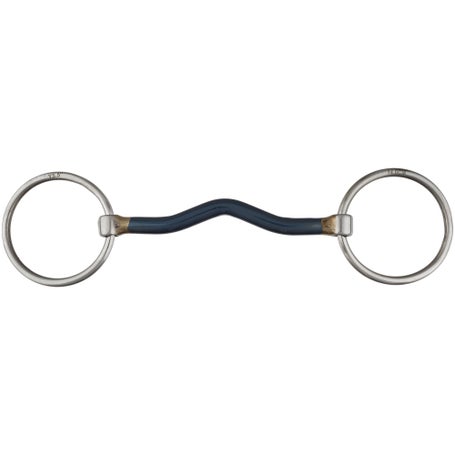
Overview
Key FeaturesKey Features Learn More
Key Features
-
Non-ToxicNon-Toxic
Bits that are made from non-toxic materials, unlike most plastics, rubbers, and metals, are a safer option for horses who need a gentler bit.
-
Increased PalatabilityIncreased Palatability
Bits that increase palatability often incorporate sweet metals (such as copper and iron) or flavored plastics which encourage the horse to salivate, relax their jaw, and accept the bit. They may be inlaid into the bars, be the roller or lozenge, or make up the entire bar.
-
Leverage PressureLeverage Pressure
These bits use indirect pressure that multiplies the amount of force exerted on the horse's mouth, nose, or poll. They are used by riders who have little to no contact or are looking for more finesse and control.
-
Direct PressureDirect Pressure
Bits that use direct pressure have a 1:1 ratio where the pressure exerted on the reins will be the same pressure felt in the mouth. They are used by riders who often have contact with their horse's mouth.
A functional bit at an affordable price, the Shires Blue Alloy Loose Ring Mullen Mouth Bit is a great option for schooling as well as competition and is a must-have for your tack room. The traditional loose ring cheek piece gives this bit a classic finish suitable for a variety of disciplines.
The mullen mouthpiece puts even pressure directly onto the tongue instead of the more sensitive bars, making it ideal for sensitive horses and situations where a high degree of lateral flexion is not required. A small center port allows for ergonomic tongue relief. With the addition of sweet iron, this bit encourages salivation and provides a pleasant taste.
Legality
Weight
Details
| Bit Summary | |
|---|---|
| Cheekpiece: | 65 mm Loose Ring |
| Mouthpiece: | 12 mm Mullen Mouth |
| Mouthpiece Material: |
Blue Alloy with Sweet Iron |
| Special Features: |
Sweet Iron Encourages Salivation |
| Leverage: | No |
| Show Legal: |
USEF, USDF, and FEI Dressage Legal |
Additional Information
Please Note:
The rusting (oxidation) process will change the blue surface of the bit to a brownish orange/grey color. This is natural and can be removed by simply wiping with a damp cloth. If the bit will be used infrequently, oxidation between use can be minimized by application of baking soda paste on the mouth and wiping clean after each use.